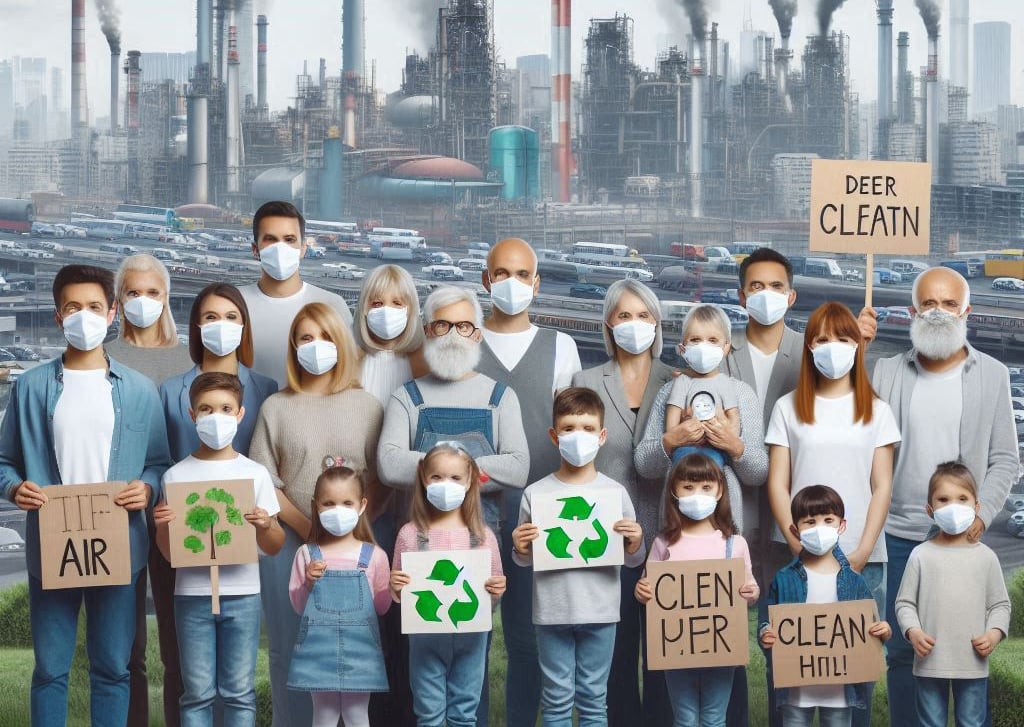Add your promotional text...
Environmental Pollution and Health
MODULE -1: Environmental Pollution and Health
11/22/20244 min read


# Pollution :
Pollution is the introduction of harmful substances or elements into the environment.
These substances can negatively affect living organisms and ecosystems.
Forms of pollution include air, water, soil, noise, radioactive pollution, etc.
Pollution can result from human activities such as:
Industrial processes
Vehicle emissions
Deforestation
Agricultural practices
It can also occur due to natural events like volcanic eruptions.
Pollution disrupts the balance of nature and poses challenges related to:
Health
Ecology
Economy
# Different types of pollutions and Its Sources:
1. Solid Waste Pollution
Industrial Waste: Non-biodegradable materials like plastics, metals, and chemicals.
Household Waste: Food scraps, packaging materials, and electronic waste.
Agricultural Waste: Pesticides, fertilizers, and animal waste.
Construction and Demolition Waste: Concrete, rubble, and debris.
Medical Waste: Expired medicines, syringes, and other biohazard materials.
Illegal Dumping: Littering in unauthorized areas.
2. Air Pollution
Vehicle Emissions: Release of carbon monoxide, nitrogen oxides, and particulate matter.
Industrial Emissions: Factories emitting sulfur dioxide, carbon dioxide, and toxic gases.
Burning of Fossil Fuels: Coal, oil, and gas combustion for energy.
Natural Sources: Wildfires, volcanic eruptions, and dust storms.
Agricultural Activities: Methane from livestock and ammonia from fertilizers.
Construction Activities: Dust and particulate matter from building sites.
3. Water Pollution
Industrial Discharge: Toxic waste and heavy metals released into water bodies.
Agricultural Runoff: Pesticides, fertilizers, and animal waste contaminating water.
Household Sewage: Untreated wastewater and detergents.
Oil Spills: From ships or offshore drilling.
Plastic Pollution: Dumping of non-degradable plastics into water bodies.
Thermal Pollution: Discharge of hot water from industrial processes.
4. Other Types of Pollutions
Soil Pollution:
Improper disposal of chemicals, fertilizers, and pesticides.
Mining activities disrupting soil layers and introducing heavy metals.
Noise Pollution:
Traffic, industrial machines, and urban development.
Social events with loudspeakers or fireworks.
Light Pollution:
Over-illumination and misdirected artificial lighting in urban areas.
Radioactive Pollution:
Nuclear power plant accidents.
Improper disposal of radioactive materials.
# Indoor Air Pollution: Sources and Impacts
Sources:
Cooking Fuels: Burning solid fuels like wood, charcoal, or dung releases harmful particles.
Household Products: Cleaning agents, paints, and solvents release volatile organic compounds (VOCs).
Poor Ventilation: Traps pollutants like carbon monoxide and radon gas inside.
Tobacco Smoke: Major contributor to indoor air pollution.
Biological Contaminants: Mold, dust mites, and pet dander.
Impacts:
Health Risks: Respiratory issues, asthma, and lung cancer due to prolonged exposure.
Eye Irritation: Smoke and chemicals cause burning sensations.
Reduced Productivity: Poor air quality affects cognitive function and energy levels.
Cardiovascular Problems: Long-term exposure can lead to heart diseases.
# Groundwater Pollution: Sources and Health Effects
Sources:
Agricultural Runoff: Pesticides and fertilizers seep into the ground and contaminate water.
Industrial Waste: Hazardous chemicals from factories leach into groundwater.
Sewage and Wastewater: Improperly treated sewage contributes to contamination.
Oil Spills and Leaks: Petroleum products infiltrate the water table.
Landfills: Decomposing waste produces harmful leachates.
Health Effects:
Drinking Water Contamination: Consumption of polluted groundwater leads to waterborne diseases like cholera and typhoid.
Toxic Exposure: Heavy metals like arsenic and lead cause neurological and developmental disorders.
Cancer Risk: Prolonged exposure to carcinogenic substances in groundwater increases cancer risks.
Reproductive Issues: Nitrates in water affect reproductive health.
# Volatile Organic Compounds (VOCs)
VOCs are organic chemicals with high vapor pressure at room temperature, easily evaporating into the air.
Common sources include:
Paints and Coatings: Release harmful chemicals during application and drying.
Cleaning Agents: Contain volatile substances like ammonia and acetone.
Building Materials: Adhesives, varnishes, and flooring often emit VOCs.
Personal Care Products: Perfumes and aerosol sprays contribute to VOC levels.
Combustion Processes: Burning fossil fuels produces VOCs.
Environmental impacts:
Contribute to air pollution, particularly smog formation.
Influence climate change by producing greenhouse gases.
Health effects:
Short-term exposure causes irritation of the eyes, nose, and throat.
Long-term exposure may lead to respiratory problems, damage to the liver, kidneys, and central nervous system.
# River, Lake, and Marine Pollution: Sources, Effects, and Mitigation Strategies
Sources:
Agricultural Runoff:
Excessive use of fertilizers and pesticides flows into rivers, lakes, and oceans.
Animal waste and soil erosion also contribute to water pollution.
Industrial Discharge:
Factories release heavy metals, chemicals, and toxic waste into water bodies.
Domestic Sewage:
Untreated wastewater from households contaminates fresh and marine water sources.
Oil Spills:
Offshore drilling and transportation accidents cause oil spills, harming marine ecosystems.
Plastic Pollution:
Plastic waste, including microplastics, accumulates in rivers, lakes, and oceans.
Mining Activities:
Mining releases sediments and hazardous chemicals into nearby water bodies.
Effects:
Ecosystem Disruption:
Pollutants harm aquatic plants and animals, disrupting biodiversity and food chains.
Human Health Hazards:
Contaminated water leads to diseases like cholera, typhoid, and hepatitis.
Consuming polluted marine life can expose humans to toxins.
Loss of Drinking Water:
Freshwater sources become unsafe, impacting communities dependent on rivers and lakes.
Economic Damage:
Fishing and tourism industries suffer due to water pollution.
Algal Blooms:
Excess nutrients from agricultural runoff cause harmful algal blooms that deplete oxygen in water.
Mitigation Strategies:
Wastewater Treatment:
Establish efficient sewage and industrial wastewater treatment plants.
Sustainable Farming Practices:
Use eco-friendly fertilizers and methods to minimize agricultural runoff.
Plastic Reduction:
Implement recycling programs and reduce single-use plastics.
Oil Spill Response:
Develop rapid cleanup measures and preventive strategies for oil spills.
Legislation and Regulations:
Enforce stricter environmental laws to curb industrial and domestic pollution.
Community Education:
Raise awareness about the importance of reducing pollution at individual and collective levels.
#Deforestation impacts :
Loss of Nutrient-Rich Topsoil: Trees and vegetation protect the topsoil from erosion. Without them, rain and wind wash away the nutrient-rich upper layer of the soil.
Increased Soil Erosion: Roots of trees bind soil particles together. Deforestation leaves the soil loose and prone to erosion by water or wind.
Decline in Soil Fertility: Removal of trees halts the cycle of organic matter decomposition, which replenishes soil nutrients, leading to reduced soil fertility.
Soil Compaction: Heavy machinery used during deforestation compacts the soil, reducing its ability to absorb water and air, which are vital for microorganisms and plant growth.
Decreased Water Retention: Forests play a role in maintaining the soil's water-holding capacity. Without tree cover, the soil loses moisture quickly.
Risk of Desertification: Prolonged deforestation in an area can turn the land arid, rendering it unproductive and leading to desert-like conditions.
Asst. Prof. S.B. Mache
Auther & Co-Founder of Skratchcodes.in


